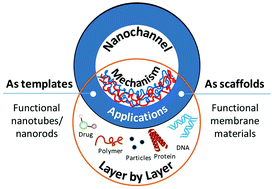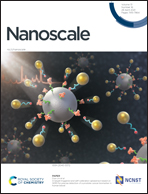Layer-by-layer assembly in nanochannels: assembly mechanism and applications
Abstract
Layer-by-layer (LbL) assembly is a versatile technology to construct multifunctional nanomaterials using various supporting substrates, enabled by the large selection freedom of building materials and diversity of possible driving forces. The fine regulation over the film thickness and structure provides an elegant way to tune the physical/chemical properties by mild assembly conditions (e.g. pH, ion strength). In this review, we focus on LbL in nanochannels, which exhibit a different growth mechanism compared to “open”, convex substrates. The assembly mechanism in nanochannels is discussed in detail, followed by the summary of applications of LbL assemblies liberated from nanochannel templates which can be used as nanoreactors, drug carriers and transporting channels across cell membranes. For fluidic applications, robust membrane substrates are required to keep in place nanotube arrays for membrane-based separation, purification, biosensing and energy harvesting, which are also discussed. The good compatibility of LbL with crossover technologies from other fields allows researchers to further extend this technology to a broader range of research fields, which is expected to result in an increased number of applications of LbL technology in the future.

- This article is part of the themed collection: Recent Review Articles


 Please wait while we load your content...
Please wait while we load your content...